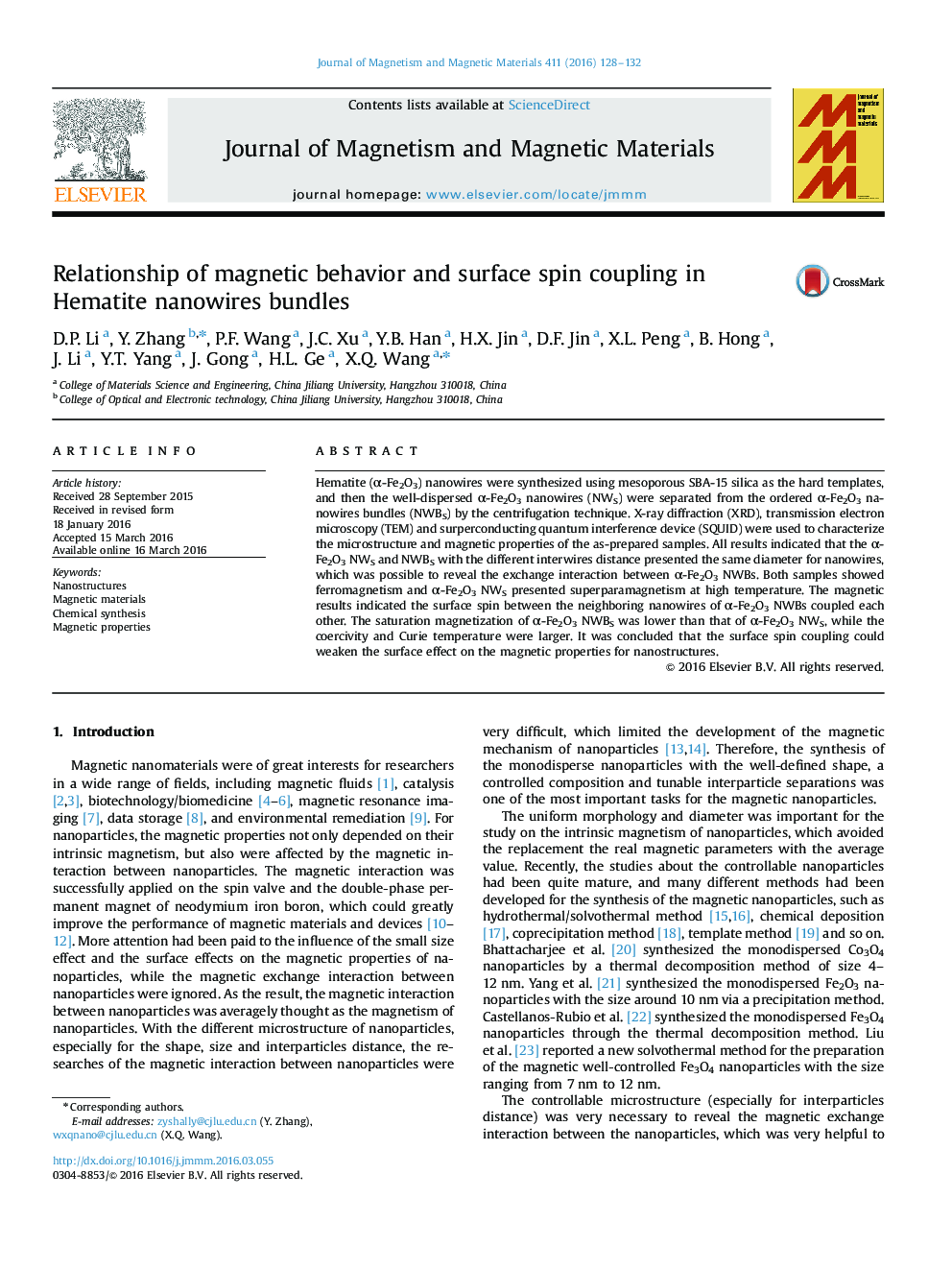| Article ID | Journal | Published Year | Pages | File Type |
|---|---|---|---|---|
| 1798123 | Journal of Magnetism and Magnetic Materials | 2016 | 5 Pages |
•α-Fe2O3 nanowires (NWs) and bundles (NWBs) were prepared in the same conditions.•Both samples possessed the same diameter and different interwires distance.•Ms of α-Fe2O3 NWBS was lower, while Hc and Tc of α-Fe2O3 NWBS were higher.•Surface spin of neighboring nanowires re-coupled each other for α-Fe2O3 NWBs.•Surface spin coupling could weaken the surface effect on magnetic properties.
Hematite (α-Fe2O3) nanowires were synthesized using mesoporous SBA-15 silica as the hard templates, and then the well-dispersed α-Fe2O3 nanowires (NWS) were separated from the ordered α-Fe2O3 nanowires bundles (NWBS) by the centrifugation technique. X-ray diffraction (XRD), transmission electron microscopy (TEM) and surperconducting quantum interference device (SQUID) were used to characterize the microstructure and magnetic properties of the as-prepared samples. All results indicated that the α-Fe2O3 NWS and NWBS with the different interwires distance presented the same diameter for nanowires, which was possible to reveal the exchange interaction between α-Fe2O3 NWBs. Both samples showed ferromagnetism and α-Fe2O3 NWS presented superparamagnetism at high temperature. The magnetic results indicated the surface spin between the neighboring nanowires of α-Fe2O3 NWBs coupled each other. The saturation magnetization of α-Fe2O3 NWBS was lower than that of α-Fe2O3 NWS, while the coercivity and Curie temperature were larger. It was concluded that the surface spin coupling could weaken the surface effect on the magnetic properties for nanostructures.
Graphical abstractFigure optionsDownload full-size imageDownload as PowerPoint slide
